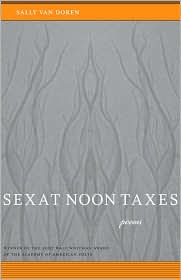
“My quarters are larger than our entire house back home. . . . When you step out on a mat, heaters come on that blow-dry your body. Instead of struggling with the knots in my wet hair, I merely place my hand on a box that sends a current through my scalp, untangling, parting, and dying my hair almost instantly. It floats down around my shoulders in a glossy curtain.” (Page 75)
The heroine of this novel, Katniss Everdeen steps up and takes the place of her sister. She and her fellow tribute, Peeta Mellark, are sent to The Capitol with their mentor and the last member from District 12 to win The Hunger Games, Haymitch. Once in The Capitol, Katniss and Peeta are groomed, presented, prepped, and molded to meet the television standards for The Hunger Games. The dynamic between these two tributes shifts throughout the novel, and in some case, like an undercurrent, it tips the plot on its ear.
“And just as the knife cuts through, I shove the end of the branch as far away from me as I can. It crashes down through the lower branches, snagging temporarily on a few but then twisting free until it smashes with a thud on the ground. The nest bursts open like an egg, and a furious swarm of tracker jackers takes to the air.” (Page 190)
Collins does an excellent job developing these young teens and staying true to the normal responses teens could have in this surreal world she creates. Katniss is a brave, but lonely girl striving to be noble, while Peeta struggles to remain the sweet boy next door and stay alive amidst the brutality of The Hunger Games. Collins’ characters are well-developed, and readers will enjoy the outrageous antics of the drunken Haymitch, the superficial Effie Trinket, and others.
The Hunger Games is an amazing look at a post-apocalyptic world through the eyes of teenagers. Collins is a masterful young adult novelist, and readers will be quickly absorbed into the world she creates. Readers will grit their teeth, bite their nails, and shake their heads as Katniss and Peeta struggle to survive amidst determined, skilled tributes from the 11 other districts.
Collins goes beyond the entertainment factor of most young adult novels to depict real-life situations in which young love buds and confuses, alliances are made, lies are told, and truth surfaces when characters least expect it. The Hunger Games is not only for teens, but also adults, though parents should be warned there is violence and innuendo.
Thankfully, readers won’t have to wait too long for the sequel, Catching Fire, which comes out in September 2009.
Also reviewed by:
Devourer of Books
Hey Lady! Whatcha Readin’
My Friend Amy
Diary of an Eccentric
Beth Fish Reads
Muse Book Reviews
5-Squared



 Sex at Noon Taxes by Sally Van Doren arrived in my mailbox from the
Sex at Noon Taxes by Sally Van Doren arrived in my mailbox from the 





